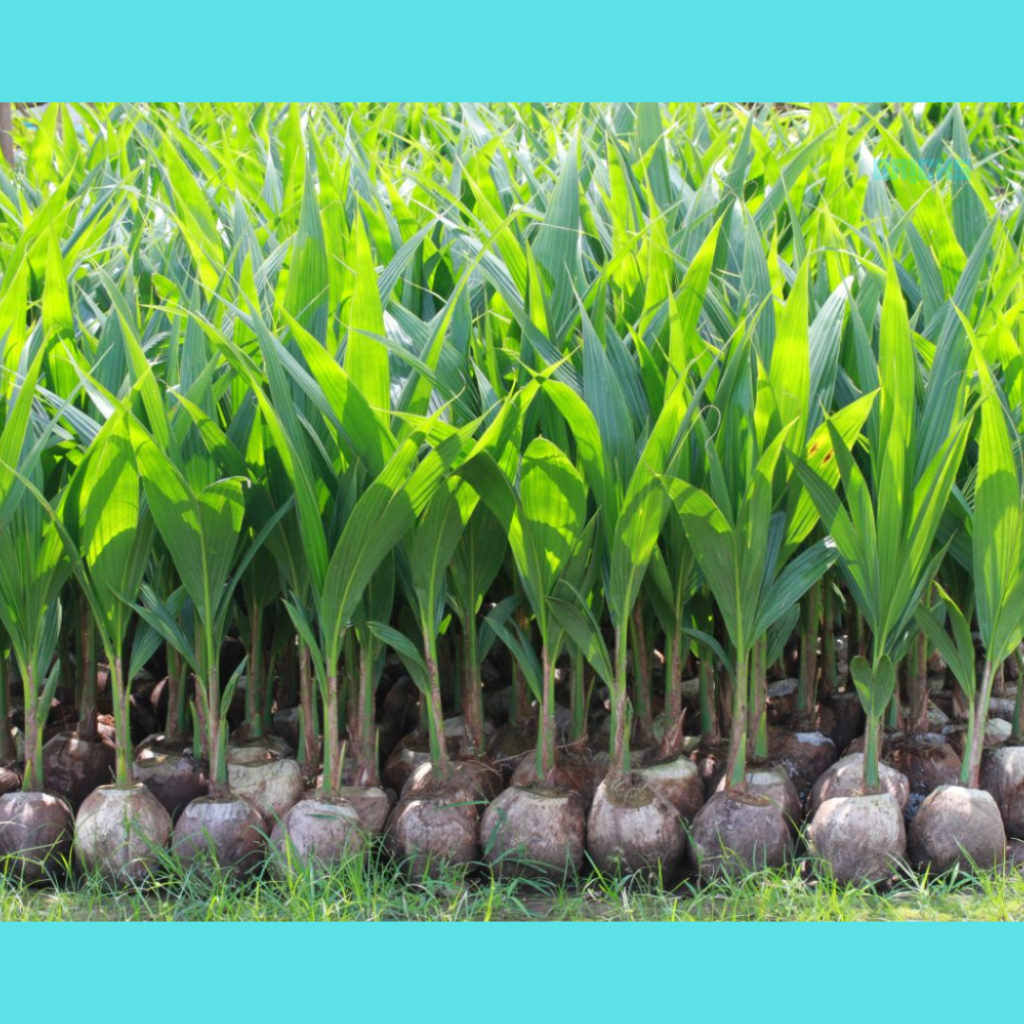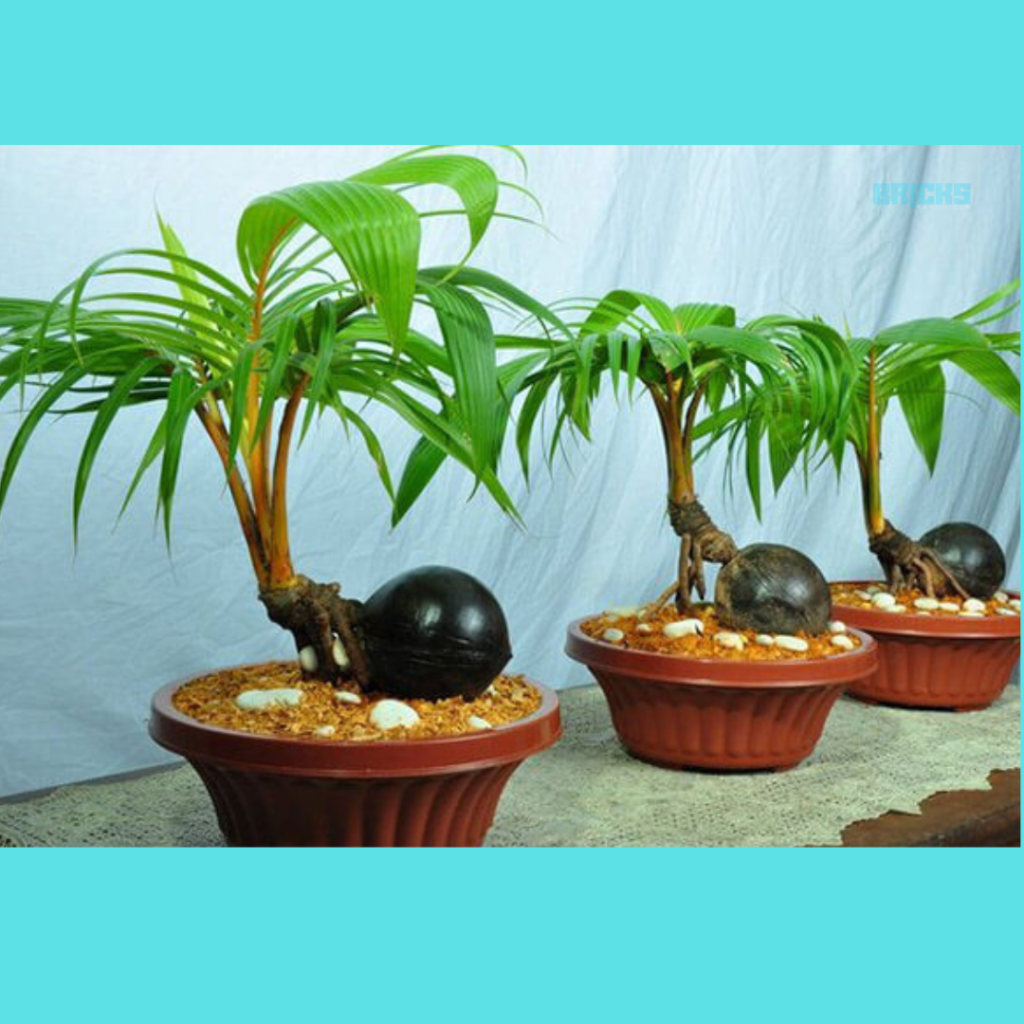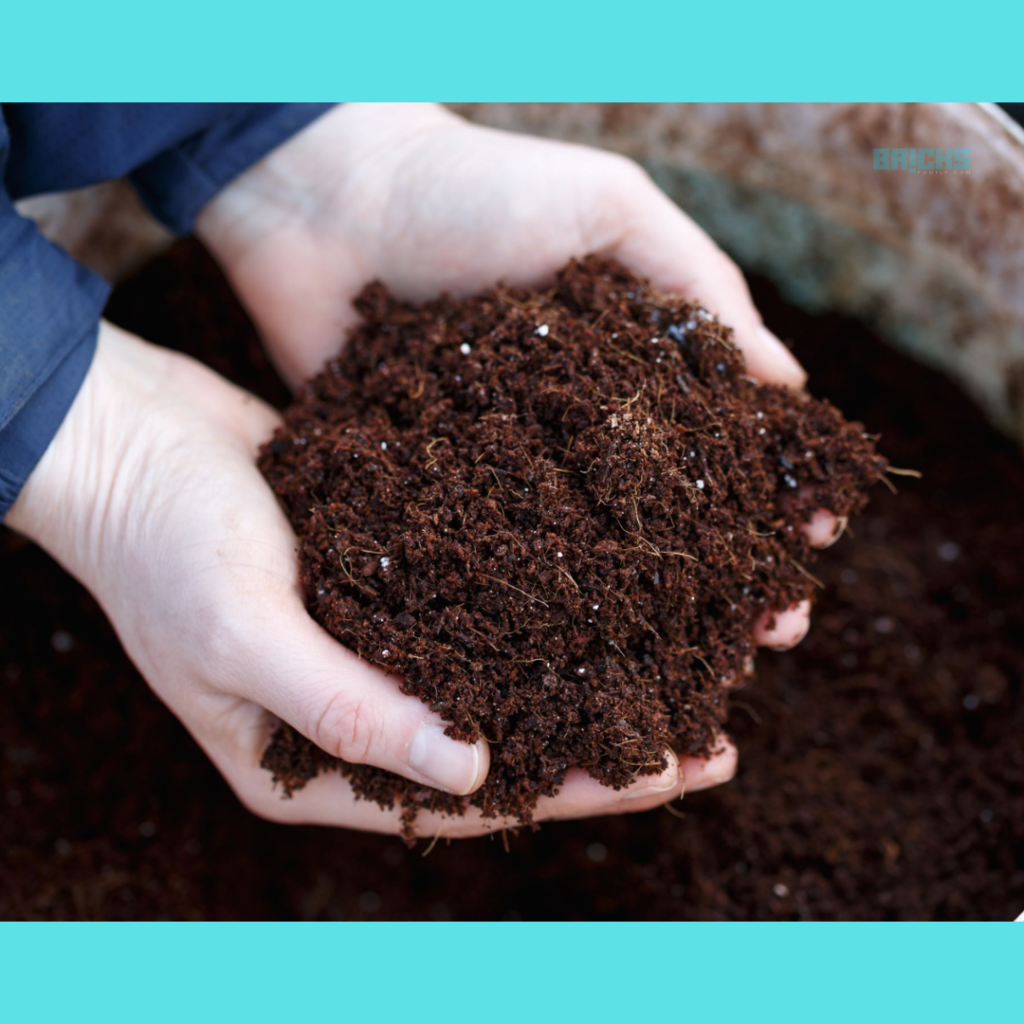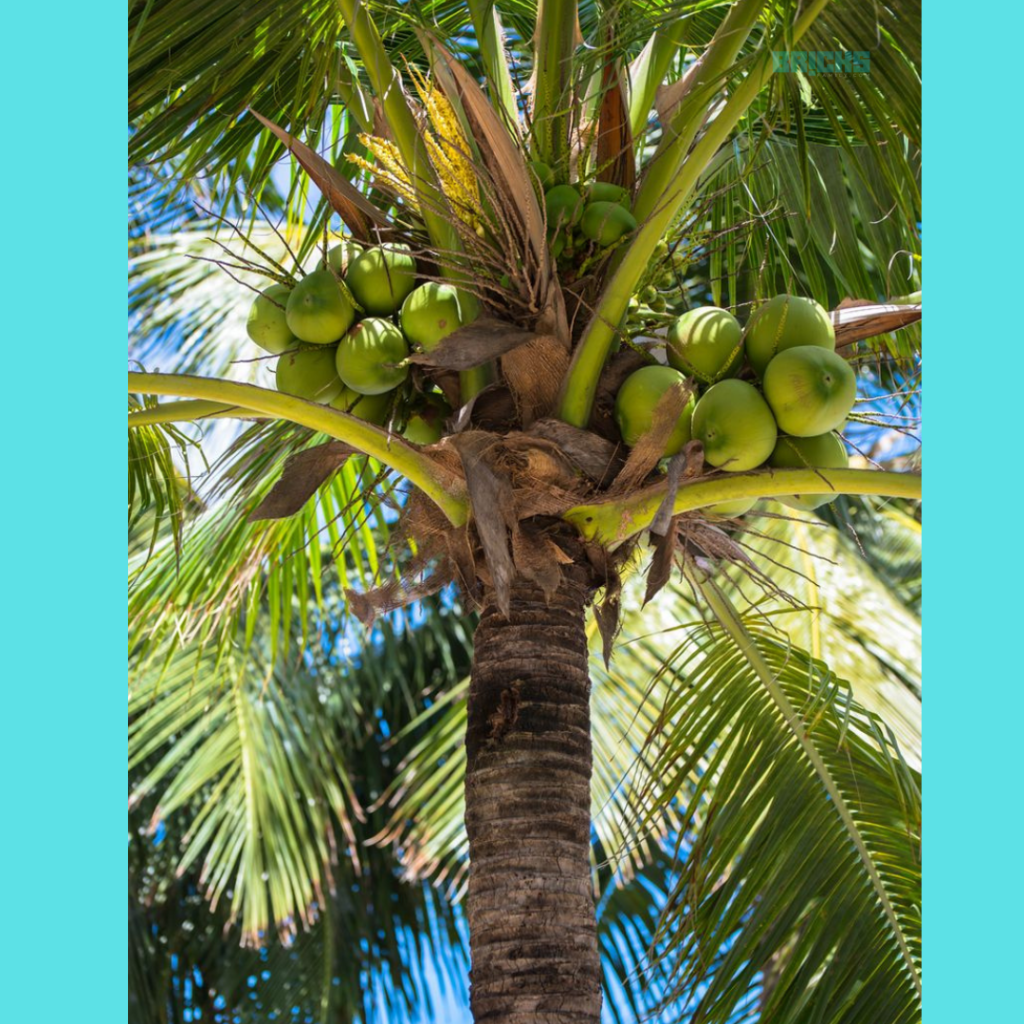Coconut trees are attractive plants that represent the tropics; learning about their advantages, how to grow them at home, and how to use them would be more enjoyable! Let’s find out in this blog Coconut Tree: How To Grow, Uses, Health Benefits and Vastu Tips.
The coconut tree is a member of the palm family and is referred to as the “Tree of Life” with the highest regard. The tree is widely harvested in tropical regions almost everywhere and is adored for its delectable fruit, the coconut. It is believed to have come from Indo-Malaya. In India, coastal regions like Goa, Kerala, Maharashtra, and Tamil Nadu are the main growing regions for coconut palms.
The coconut tree affects our way of life in a variety of ways, from making the surroundings seem breezy and producing delicious coconuts to having religious importance as the home of Goddess Lakshmi and being offered to many Lords.
Today, we are discussing how to grow a coconut tree at home, its uses, Vastu, and health benefits.
Special Features of a Coconut Tree

Take a short look at these unique qualities that make a coconut tree both an excellent outdoor and indoor plant:
- The plant has a single, tall, gray-brown trunk that is slightly bent.
- It can reach a height of up to 25 meters or 80 feet.
- With enormous feather-like leaves, it flourishes.
- A coconut tree’s whole growth and maturation takes about 15 to 20 years.
- It endures for between 60 and 100 years outside. The plant rarely thrives inside and frequently doesn’t bear fruit.
| Common Name | Coconut Palm |
| Botanical Name | Cocos Nucifera |
| Plant Type | Perennial |
How to Grow a Coconut Tree Outdoors and Indoors?

Beautiful coconut palms naturally grow in tropical environments. You can also cultivate it at home, though. It is a simple technique to brighten up your courtyard or house, whether you want to cultivate a coconut tree indoors or outdoors. But bear in mind that if you don’t live in its native environment, this plant can be very difficult to maintain.
Find out how to develop your coconut tree quickly here:
Part 1: Germinate The Coconut Seed
Find the right nut to incubate
The ideal nut will be filled with enough water to flow when shaken. Please verify that the nut is enclosed in its husk. You can choose a coconut that fell from the tree or purchase one from a store.
Keep it in a bucket of lukewarm water
With the use of a weight or stone, submerge the coconut in the water. For 3–4 days, leave it in the bucket. This will hasten germination and cause the coconut to soften.
Fill a cup of water in a zip-lock plastic bag
Maintain the nut in this bag, then secure it. The bag should be kept in a warm location for around three months. You may put it close to a water heater.
Keep an eye on the coconut for germination
Put the seed back in the bag after the nut begins to form roots and cover them with a damp paper towel. When the roots have expanded to a height of 6–8 inches and the sprout above the nut is long enough to be the size of a finger, the seed will begin to germinate.

Part 2: Plant Your Tree
Mix the planting soil
Mix equal parts of sand and potting soil. Gravel should be added to aerate the soil. Pre-mixed soil is not required for outdoor use. Please keep it in a location with soil that drains nicely.
Keep the germinated coconut in the soil
One-third of the nut sticks out when you plant it in the ground with the pointed end down. Use a 10-inch-deep container with a diameter big enough to accommodate the seed indoors.
Provide ample water and sunlight
To keep the soil moist and not soggy, water the tree twice a week. Make sure it receives enough sunlight, but avoid excessive brightness. Spraying both sides of the leaves is necessary to keep indoor plants hydrated.

Part 3: Maintain Your Tree
Keep the tree watered and warm
The temperature around a coconut tree should be at least 72 degrees Fahrenheit. However, temperatures above 80 degrees Fahrenheit are ideal for the plant’s growth.
Fertilise it after a year
Use a rotary spreader to apply fertilizer at a rate of 0.45 kilograms per 100 square feet. Make sure the fertilizer is nutrient-rich.
Harvest the coconuts
After five years, the coconut tree will reach maturity and bear fruit. The coconuts will take between 7 and 12 months to fully mature once they bloom.
Uses of a Coconut Tree

Every part of a coconut tree has a special use. Know below some important uses of coconut trees:
Raw White Coconut Flesh: Milk, flour, and nourishment are all made from the flesh of the coconut. Coconut flesh is used in various cuisines, including curries, chutney, biscuits, pudding, ladoos, rice dishes, and fish stew. The flour is used in baking and is free of both gluten and carbohydrates.
Coconut Water: Tender coconut water is a fresh, healthy,
and energy drink.
Coconut Tree Roots: The coconut tree roots are ropey and used to knit fabrics and artefacts. These roots are also used for medical purposes, especially in Ayurveda.
Coconut Oil: Coconut oil is widely used for cooking, skin and hair.
Coconut Tree Leaves: For the construction of roofs, coconut tree leaves are employed. Creating toys and brooms also uses these.
Coconut Trunk: The coconut tree trunk makes furniture, windows, door frames, floors, drums, and canoes. It is also used to build houses and boats.
Coconut Fruit:The coconut fruit is wonderful, eaten raw and cooked, and used to make oil, milk, and cream.
Health Benefits of Coconut
The coconut fruit has the following notable health advantages:
- The high fibre content of coconuts aids in the management of diabetes.
- It facilitates the body’s absorption of calcium, which further aids in the growth of strong teeth and bones.
- Coconut is a fantastic all-natural moisturizer and softener for the skin.
- The coconut oil protects split ends, conditions hair, and relieves dandruff.
- The coconut water promotes energy and aids in digestion.
- It lessens hunger pangs and encourages normal thyroid function.
- It is beneficial for immunity since it has antiviral, antifungal, antiparasitic, and antibacterial properties.
- According to some sources, consuming 200 grams of coconut daily will help you lose belly fat in just 12 weeks.
- By eradicating oral bacteria, lowering lousy breath, and enhancing general dental health, it aids in maintaining good oral hygiene.
Vastu for Coconut Tree at Home
A coconut tree at home has religious significance in addition to its health and other advantages because it is thought to be the residence of Goddess Lakshmi. Therefore, when planting one at home, it is crucial to adhere to the following Vastu guidelines:
- Plant a coconut tree in the southwest or southwestern corner of your house. This brings luck into the house and promotes the residents’ success in life.
- If you must plant it towards the north, east, or northeast since the directions above are not feasible for you, make sure the tree’s height is more than the height of your residence.
- According to Vastu, having a coconut tree at home might aid residents with issues relating to their jobs or businesses.
- Use a coconut solution to overcome your issues in life. Rotate the coconut seven times over your head or the head of the person experiencing difficulty. Bring it to the temple and set it ablaze. Every Tuesday or Saturday, use this cure for a few days to receive relief from the issues.
- A coconut tree should never be cut down for any reason. This has a negative impact on your family and your life.
Summing Up: Coconut Trees at Home
Most of us have lovely courtyards and gardens inside our homes. So why not use the tree of life to bring life to our home? Install a coconut tree in your lovely home and reap its benefits for your stars and way of life. We wish you well on your road to owning a coconut tree at home, and we pray that it will bring you peace and wealth.
Also Read: Dussehra Vijayadashami – Muhurat, Puja at home, Significance & Rituals
Similar Topics: Navratri 2023 Puja Muhurat & Vidhi at Home | Significance of 9 Durga Incarnations















